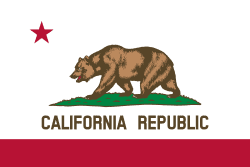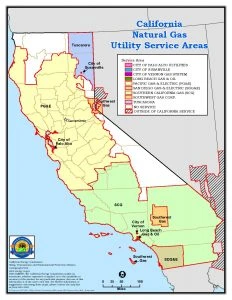 The History of Energy Deregulation in California
The History of Energy Deregulation in California
California was the first state in the country to introduce deregulated energy in 1996. The California Public Utilities Commission (CPUC) lifted caps on electrical supply prices, allowing electricity prices to respond to free-market supply and demand. Public utility providers were encouraged to sell their plants and supply chain to privately-owned companies, which increased competition for retail consumers and resulted in lower prices than before.
Electrical supply companies traded electricity via the California Power Exchange (CalPX), and prices started escalating around 2000. December wholesale prices per megawatt-hour (MWh) were 11 times higher than December 1999’s.
Enron and the California Energy Crisis
In the late 90s and early 2000s, Enron created an artificial electricity shortage in California. They took down power plants for maintenance during peak demand season. The resulted in higher electricity rates and rolling blackouts that made businesses and residents suffer.
The actions of Enron, as well as those of some politicians, led to the California Energy Crisis, which lasted from the year 2000 to 2001. Thousands of residents were burdened with the unacceptably high electricity and gas prices without receiving proper customer service and utility delivery.
Because of these conditions, the government had to take the necessary steps to control the situation and help their residents get affordable power back into their homes.
The result is the deregulation of energy in the state of California.
California Energy Deregulation Today
The deregulation of energy in California has significantly helped deliver more reliable gas and electricity services back into California homes. Businesses can now operate without fear of losing revenue due to blackouts. As a result, businesses and residents have more provider choices and competitive rates.
California is now one of the lowest power-consuming states in the country, with an average of 6.9-megawatt-hours per year. Residents have the option of natural gas, electricity, and solar power for their energy needs.
The Push for 100% Clean Electricity by 2045
The California Public Utilities Commission recently proposed a new policy that will allow state utilities to go 100 percent clean electricity for residential customers by the year 2045. This proposal is part of a larger effort to move the state towards a carbon-free electricity grid by the same year. The move has been met with praise by environmental groups and clean energy advocates, as it would help reduce greenhouse gas emissions and provide more access to renewable energy sources.
Quick Facts about California Energy
- Member of the Western Climate Initiative (WCI)– California is an active member of the Western Climate Initiative. This is a regional agreement between American governors and Canadian premiers to reduce greenhouse gas. The central component of the agreement is the enactment of the cap-and-trade scheme, which aims to reduce greenhouse gas emissions.
- 20% Renewable Energy- Utility providers in California must sell at least 20% renewable energy. They aimed to increase this to up to 30% by 2020. California is already ahead of its goals, with 31.36% of its energy coming from renewables in 2018.
- Clean Burning Gasoline- The state requires residents of California to use Clean Burning Gasoline, gasoline blends that meet the California Air Resources Board (CARB) requirements. This is gasoline with a special blend formulated to reduce the greenhouse emissions of cars.
- Decoupling revenue- Utility providers in California are allowed to decouple their revenue from selling gas and electricity. Decoupling means removing any unwanted AC distortion or oscillation in circuits; this enables utility providers to increase their revenue by selling less gas and electricity.
- De facto ban on coal-fired power plants– California is serious about lessening greenhouse emissions. They have put in place an interim greenhouse performance standard that requires utility providers to produce no more than a combined-cycle gas turbine power plant’s worth of greenhouse gas.
California Electricity Companies
California residents have many options for electrical services, depending on their region. All licensed energy providers in the state are Electric Load-Serving Entities (LSEs) and must register with the California Public Utilities Commission. Customers may search for providers in their area here.
Top 5 Largest Energy Companies in California
1. Pacific Gas and Electric Company
2. Southern California Edison
3. Shell Energy North America
4. Sempra Energy
5. Chevron Corporation
California Natural Gas Utility Services
Nearly 45% of natural gas consumption in the state is for energy production, with the remainder split among residential, commercial, and industrial use. It’s mainly used for space heating and may be provided separately from electrical power. Natural gas isn’t available in all parts of the state, however.
The state’s natural gas provider sectors are:
California Natural Gas Utility Service Area Map

Rolling Blackouts in California
Unfortunately, rolling blackouts in California have become increasingly common in recent years. This is due to the decreasing energy supply in California and the increasing demands due to population growth. Rolling blackouts are scheduled or unplanned power outages that often last for several hours and cause massive disruptions to everyday life. The California government has taken several steps to try to combat this problem, but it remains a major issue for many households and businesses in the state.
During a rolling blackout, Californians should stay indoors, unplug all major appliances, and turn off non-essential lighting. Wherever possible, switch to battery-operated lighting and flashlights, so you can see during an outage. Additionally, avoid using hot appliances such as ovens, microwaves, and toaster ovens, as they are a major source of power consumption.
Map of US Energy Deregulation
California is one of 26 US States that have some form of energy deregulation whether it be electricity, natural gas or both. Use our interactive map to get more information on deregulated energy states in America.
